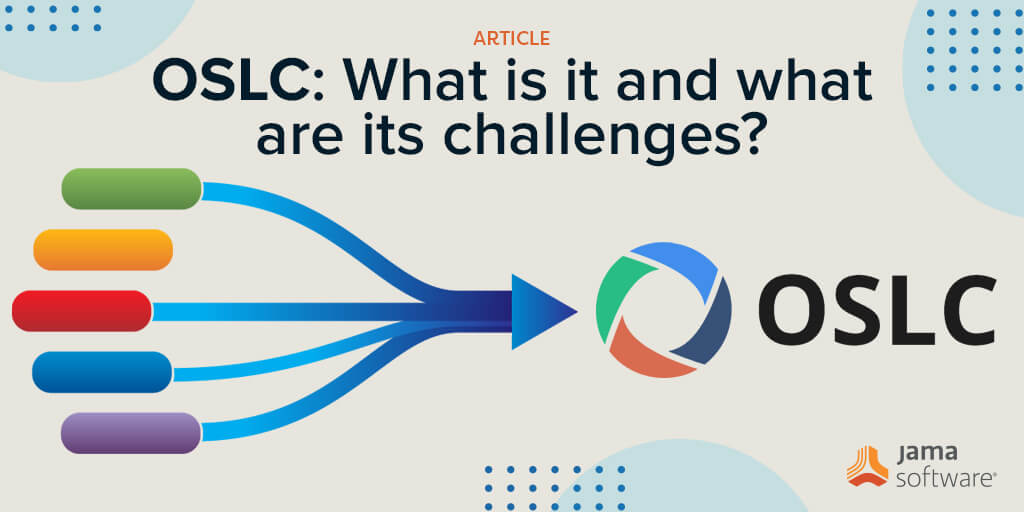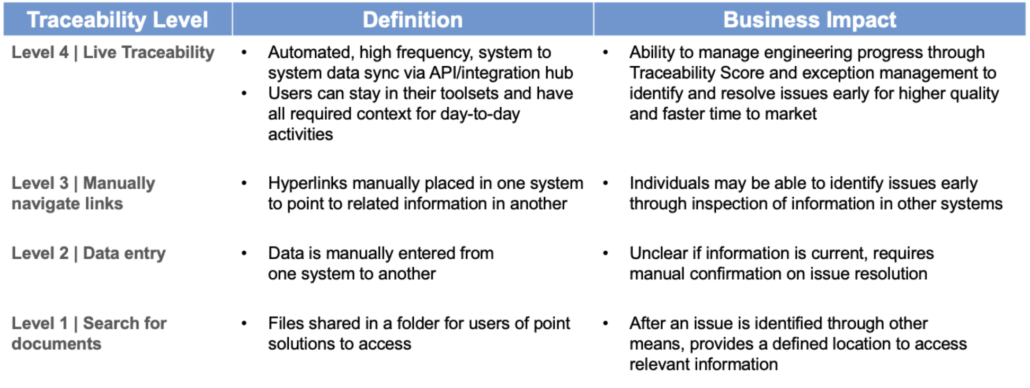
What Is OSLC?
OSLC (Open Services for Lifecycle Collaboration) is an “open” standard designed to facilitate communication between tooling primarily used in engineering disciplines. The initial work was done by IBM in 2009 and in 2013 governance moved to OASIS. The idea behind OSLC is to provide a common layer for tool vendors so that connection between tools can be created without having to write and maintain individual connectors between each set of tools. In theory, this reduces the burden on tool vendors and gives users confidence that tools that support OSLC will interoperate without issue.
What tools support OSLC?
Many tool vendors do not directly support OSLC. Jama Software® integrates with a wide variety of best-of-breed tools and most of them do not come with native OSLC connectors. Of the 25 most prevalent tools that we see in the market, 20% have some OSLC capability, and only 16% have a company- supported connector. Contrast that with the fact that 100% of these tools have a company-supported REST API and you can clearly see the direction of the market.
OSLC services a relatively small niche that often requires consulting and some technical assistance to setup. Given that many of the tools that utilize OSLC are desktop based, the IT environment becomes a challenge for integration. This has led many to rely on third-party vendors to broker the OSLC integration layer and provide the support necessary. At Jama Software we have partnered with MiD and their product Smartfacts to enable this connection. Jama Connect® has a robust REST API and through our partnership with MiD we can support those customers who need an OSLC integration, while extending our integration capabilities to the much wider systems engineering ecosystem.
RELATED: Jama Software® and Sparx Systems Enhance Best-of-breed Tools Integration to Strengthen Live Traceability™ Across Systems Development
Using the integration hierarchy to achieve Live Traceability™
Most companies who are considering an OSLC integration are doing so to improve requirements traceability across their product development process. Requirements traceability approaches range from rudimentary, manual approaches, to automated synchronization across tools. At Jama Software we’re focused on helping our customers achieve Live Traceability™ via automated synchronizations of best-of-breed tools to a common traceability model. For those desktop tools that do not fully support automated synchronization, a lower level of traceability is the best that can be achieved.

OSLC sits squarely in Level 3.
RELATED: DOORS Next Generation or Jama Connect: A Side-by-Side Look at Requirements Management Platforms
Organizations that are heavily invested in a specific toolchain suite can leverage OSLC to reduce the interop challenge inherent in suites that have been created through acquisition. Embedding user interfaces into other applications and maintaining links allows a user to navigate through the “suite” without having to open each application. When dealing with desktop applications, this can reduce the need to load up each tool individually. It is certainly better than trying to sync information through manual efforts.
In desktop tool scenarios and with tools that do not have a web API, OSLC might be as far as you can go. In which case, Jama Software has you covered. For those who want to move beyond the single user context and achieve Live Traceability, we recommend Level 4 integrations. Utilizing easy-to-implement, universal web standards we’ve helped hundreds of organizations achieve the user-level benefits of contextual data while also elevating the systems engineer’s visibility to the process and organization level.
Contact Jama Software today to find out how we can help you with OSLC and further you on your journey towards Live Traceability.
- How to Develop IoT Products with Security in Mind - August 22, 2023
- Let’s Write Redux! - May 4, 2023
- What is a Scaled Agile Framework (SAFe) and How Does it Help with Complex Software Development? - February 22, 2023
